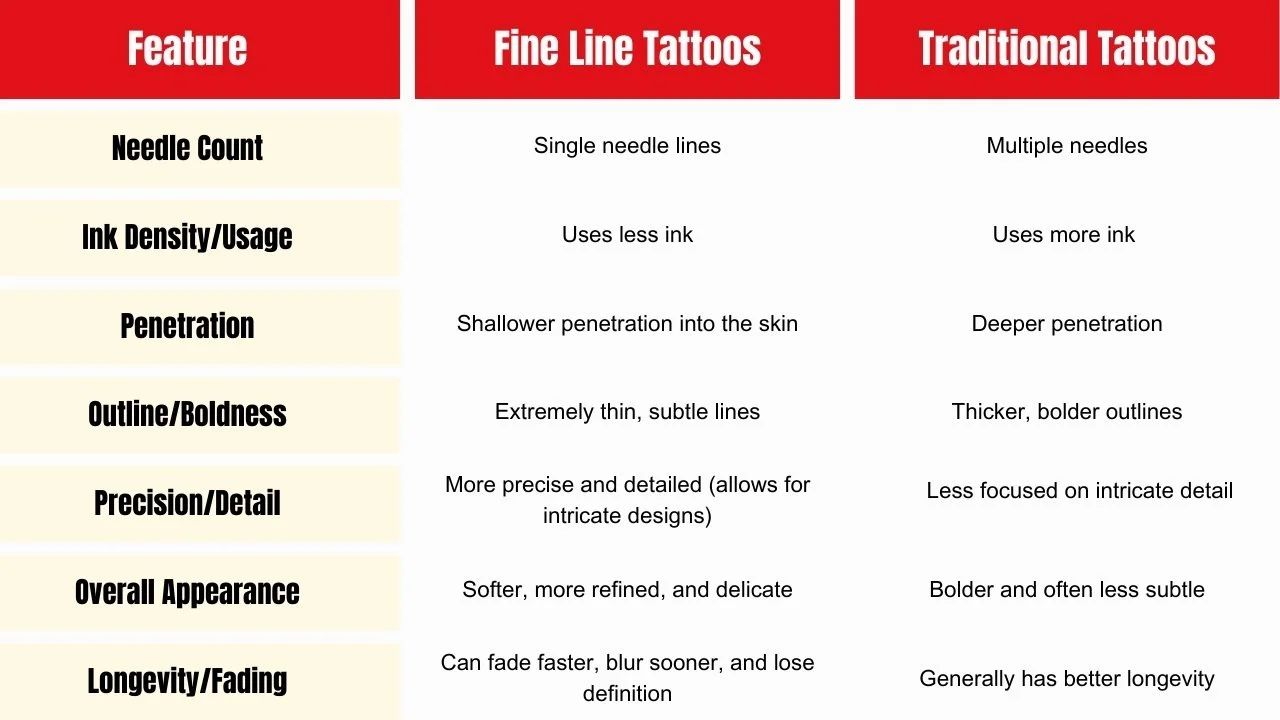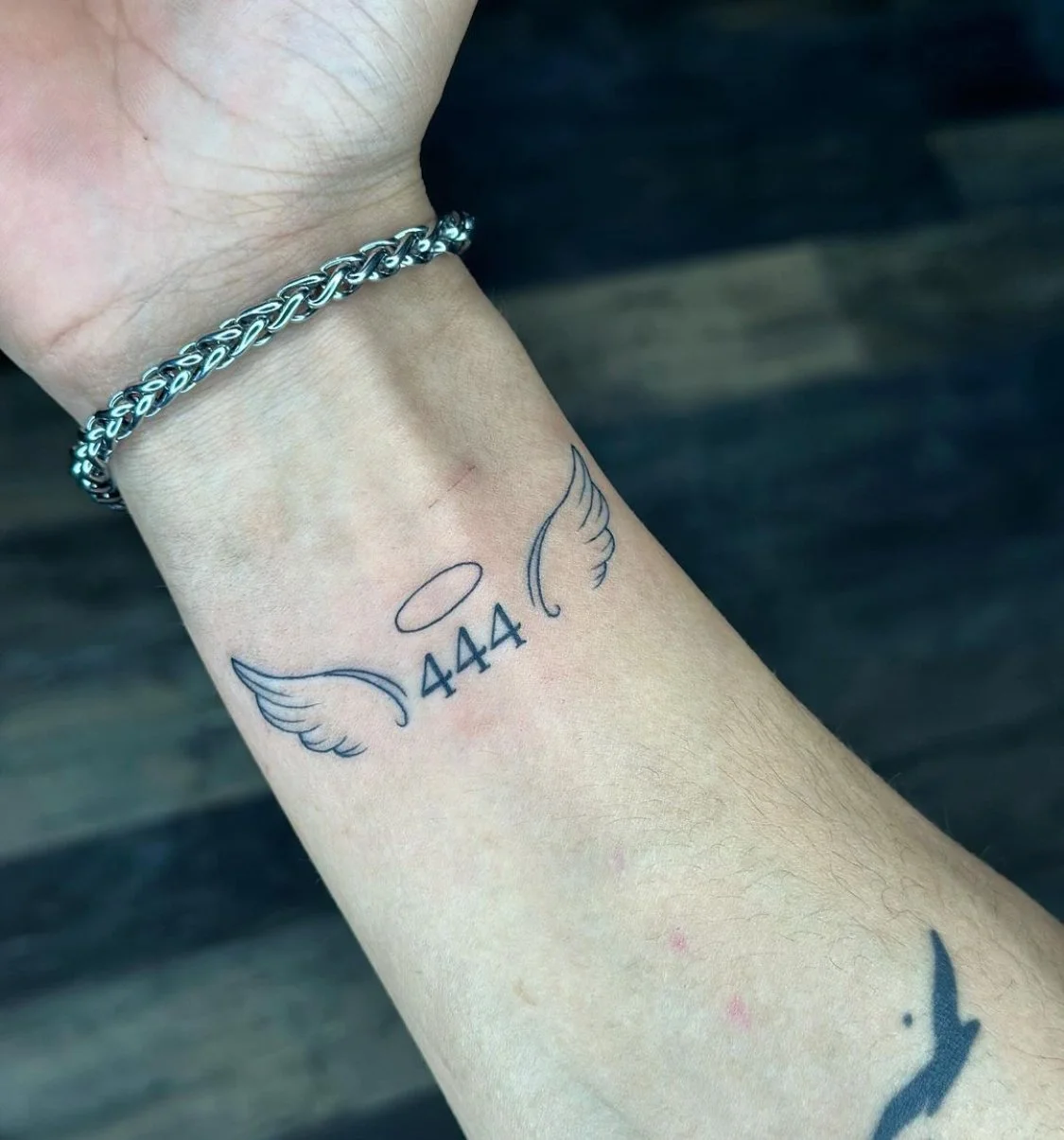How Do Fine Line Tattoos Age? What to Expect Over Time
Fine line tattoos have become one of the most sought-after tattoo styles today. Their delicate, minimalist look gives them a timeless, almost ethereal quality that many people love. But as refined as they appear when fresh, one of the most common questions artists hear from clients is: How do fine line tattoos age over time?
The answer isn’t one-size-fits-all. Fine line tattoos can age beautifully if done correctly and cared for properly, but they’re also more vulnerable to fading and blurring than heavier, bolder designs. Understanding what affects their longevity, how to care for them, and when to consider touch-ups can help you preserve your delicate ink for years to come.
If you’re considering getting one of these minimalist masterpieces, choosing a reliable tattoo shop with artists experienced in fine line work is the first step toward ensuring your tattoo ages gracefully.
The Nature of Fine Line Tattoos
Fine line tattoos are exactly what the name suggests designs created using extremely thin, single-needle lines. Unlike traditional tattoos that use multiple needles to create thicker, bolder outlines, fine line work is more precise, subtle, and detailed.
This style allows artists to craft intricate designs such as floral pieces, geometric patterns, or minimalist symbols with incredible accuracy. Because they use less ink and shallower penetration into the skin, the finished tattoos often appear softer and more refined.
However, that same delicacy means fine line tattoos don’t always have the same longevity as bolder designs. Thinner lines can fade faster, blur sooner, and lose definition if not properly cared for.
The Aging Timeline: Year by Year
Every tattoo evolves as your skin changes, but fine line tattoos are especially sensitive to time. Here’s what to expect as yours ages:
Year 0–1: Healing and Settling
In the first few weeks, your tattoo will heal and begin to settle into the skin. During this time, you might see mild flaking or peeling, which is normal. The ink will also appear slightly lighter after healing is complete.
Year 1–3: Minor Softening
Fine line tattoos typically start to soften around this stage. The crispness of the lines may lessen slightly, but if you’ve followed proper tattoo aftercare instructions, your tattoo should still look clean and clear.
Year 3–5: Noticeable Changes
By this point, environmental factors like sun exposure or friction begin to show their effects. Areas like fingers, wrists, or ribs may start to fade or blur sooner, while areas like the upper arm or back tend to maintain their sharpness longer.
Year 5–10: Natural Wear and Tear
Most fine line tattoos begin to show more visible aging at this stage. The once-delicate lines might spread slightly, causing the tattoo to lose some definition. However, this can be minimized with regular touch-ups and consistent care.
Factors That Affect How Fine Line Tattoos Age
Several elements determine how your fine line tattoo will age. While some are beyond your control, others depend on the care and choices you make before and after your session.
1. Tattoo Placement
Areas of the body that move frequently, like wrists, ankles, and fingers, experience more stretching and friction, which can cause fine lines to blur faster. Meanwhile, spots with less sun exposure—like the upper arm, thigh, or back tend to preserve the tattoo longer.
2. Artist Technique
Fine line tattoos require precision. Too shallow, and the ink may fade prematurely; too deep, and it can spread beneath the skin. This is why working with an artist skilled in fine line techniques is essential.
3. Ink Quality and Equipment
Professional artists use high-quality inks that retain color and integrity over time. They also use proper sterilization and equipment suited for delicate lines, which helps ensure consistency and depth control.
4. Skin Type and Texture
Oily or thick skin types can cause ink to spread more quickly, while dry skin might fade faster without consistent moisturization. Hydration and skincare play major roles in tattoo longevity.
5. Sun Exposure
UV rays are one of the biggest enemies of tattoos. Over time, sunlight can cause the pigment to break down, leading to fading. Regular sunscreen use helps preserve ink clarity.
The Healing Process Matters More Than You Think
Your tattoo’s future appearance depends heavily on how you treat it right after getting it. The healing phase sets the tone for the years ahead.
During the first two to three weeks, your body is working hard to protect and repair the tattooed area. This process involves forming new skin over the ink, and how well this happens will influence the final result.
Avoid scratching, soaking, or picking at the tattoo as it heals. Keep it clean and lightly moisturized according to your artist’s aftercare instructions. Following these guidelines will prevent unnecessary scabbing or ink loss.
If you need a detailed guide, check out these professional tattoo aftercare instructions to ensure your healing process supports the tattoo’s long-term appearance.
Aftercare and Long-Term Maintenance
Once your tattoo has fully healed, the real maintenance begins. Fine line tattoos need a little more attention than bold ones to keep their details crisp.
Keep It Moisturized:
Dry skin can make your tattoo appear dull and can accelerate fading. Apply a gentle, fragrance-free lotion regularly.
Protect It from the Sun:
SPF 30 or higher sunscreen is non-negotiable for tattooed areas, even on cloudy days.
Avoid Excessive Exfoliation:
Scrubbing or using chemical exfoliants on tattooed skin can slowly wear away pigment.
Stay Hydrated and Healthy:
Skin health reflects internal hydration. The more nourished your skin, the longer your ink stays vibrant.
When to Consider a Touch-Up
Even with great care, touch-ups are a natural part of maintaining fine line tattoos. Many artists recommend scheduling one every few years to restore clarity and definition.
A touch-up doesn’t mean your tattoo didn’t “hold up” well; rather, it’s a way to keep your artwork looking its best. Areas like fingers, ribs, and feet often need attention sooner than others.
If you notice faded spots or blurred lines, reach out to your artist for evaluation. They’ll help determine whether a touch-up is needed and how to approach it.
If you’re looking for a customized tattoo or want to refresh an existing one, consult an experienced artist who specializes in fine line work.
Best and Worst Placements for Fine Line Tattoos
Fine line tattoos thrive in areas with less movement and friction. Good placements include:
Inner forearm
Upper arm
Shoulder
Collarbone
Upper thigh
High-friction areas like hands, feet, and ribs, while popular for aesthetic reasons, tend to blur faster. Still, some people choose these locations for symbolic or visual appeal, understanding that occasional maintenance will be part of the journey.
Is a Fine Line Tattoo Right for You?
Fine line tattoos are perfect for those who appreciate minimalism, subtle expression, and elegance. They can represent deep meaning without drawing too much attention, making them ideal for both first-timers and seasoned collectors.
However, it’s essential to have realistic expectations. Fine line tattoos are not “low-maintenance” simply because they’re small. They require the same level of care and attention, sometimes even more, to keep them looking refined.
Before you decide, it helps to know more about what a fine line tattoo truly entails, including design considerations and maintenance needs
How to Keep Your Fine Line Tattoo Looking Its Best
Follow Aftercare Diligently: Healing sets the foundation for longevity.
Use Sunscreen Daily: Sun protection can extend the tattoo’s life dramatically.
Schedule Touch-Ups When Needed: Regular maintenance helps retain clarity.
Choose Your Artist Wisely: Experience with fine line technique makes all the difference.
Stay Mindful of Placement: The right body area can add years to your tattoo’s lifespan.
CoNclusion
Fine line tattoos are a stunning blend of artistry and subtlety. They age differently from traditional tattoos, but with proper care, they can remain elegant and expressive for years. Understanding how they evolve over time helps you make informed decisions about design, placement, and maintenance.
Whether you’re getting your first fine line tattoo or refreshing an old favorite, finding a reliable tattoo shop with skilled artists ensures your delicate ink stands the test of time.
Frequently Asked Questions
-
Yes, fine line tattoos typically fade faster due to their thin lines and reduced ink density. However, with proper aftercare and sun protection, they can maintain clarity for many years.
-
It depends on your tattoo’s location and exposure. On average, every 3–5 years is a good interval, though tattoos on hands or ribs may need more frequent touch-ups.
-
Not always. Some intricate or shaded designs might lose clarity over time when done in fine line style. A skilled artist can help modify or simplify your concept to ensure it ages well.






